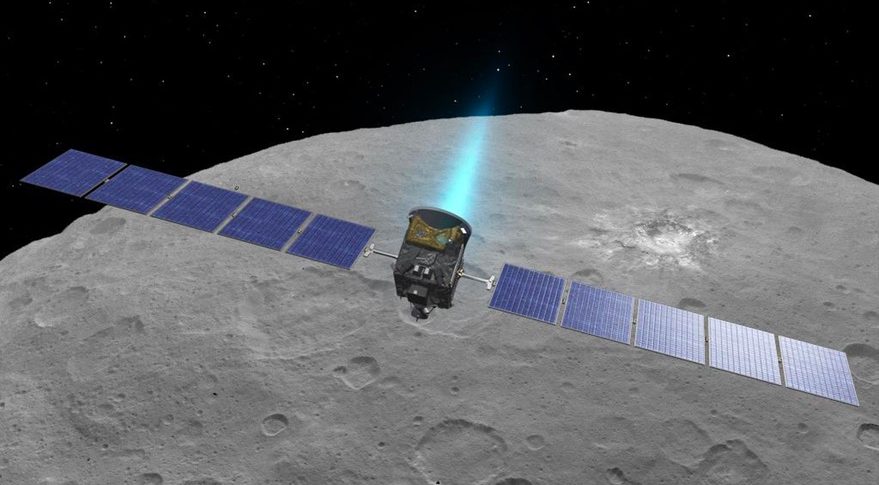Dawn to Fly Closer to Ceres Than Ever in Mission's Final Phase

NEW ORLEANS — NASA's Dawn mission to the main asteroid belt, granted a second extended mission earlier this year, will end later next year after a final set of close-up observations of the dwarf planet Ceres.
NASA approved a second extended mission for Dawn Oct. 1, electing to keep the spacecraft in orbit around Ceres versus proposals to send the spacecraft out of orbit to flyby another asteroid. Dawn, in this new extended mission, will shift into an elliptical orbit in 2018 to provide much closer views of the surface than possible earlier in the mission.
"We're going to be using an elliptical orbit to dive closer to the surface than we have before, down to 30 kilometers altitude," said Carol Raymond, deputy principal investigator for Dawn during an Dec. 12 briefing about the mission at the Fall Meeting of the American Geophysical Union here. That altitude is significantly lower than what NASA stated when the agency announced the new extended mission. [Related: Bright Spots on Ceres, Spotted by Dawn Probe, Hint at Ancient Ocean]
Those close approaches will provide higher resolution and more accurate measurements of the chemistry of Ceres' surface, as well as "unprecedented" high-resolution images of selected features. "We're aiming to test our ideas about the origin and evolution of Ceres," she said.
That orbit, while stable, will limit the lifetime of the spacecraft. With the failure of three of its four reaction wheels, the spacecraft must use thrusters to maintain attitude control, consuming its limited supplies of hydrazine. That usage increases the closer Dawn is to Ceres.
One the spacecraft uses up that hydrazine, its mission will end since it will no longer be able to maintain attitude control. Exactly how long that will take is not yet known, she said, because of uncertainties in just how much usable hydrazine remains on the spacecraft and how to use it.
"We're still working through finalizing the plan," she said. Right now, she said the current approach called for moving into the low elliptical orbit in the spring of 2018. "We would be able to operate there on the order of three or four months."
Get the Space.com Newsletter
Breaking space news, the latest updates on rocket launches, skywatching events and more!
Raymond and others involved in the mission hope that the data collected in final extended mission will help them better understand a phenomenon known as "cryovolcanism," with ice from beneath the planet's surface erupting, leaving behind bright patches of sodium carbonate. [Awesome Ceres Photos by NASA's Dawn Spacecraft]
At the briefing, scientists said that they had detected more than 300 bright spots, associated with cryovolcanism relatively recently in the dwarf planet's history. That surprised scientists, who originally thought that Ceres and other large bodies in the asteroid belt, like the asteroid Vesta that Dawn visited earlier in its mission, were relatively unchanged since early in the solar system's history.
"Before Dawn launched, we viewed Vesta and Ceres as time capsules or fossils, frozen in time from the beginning of the solar system," Raymond said. "What we did not expect was to see these abundant bright deposits splayed across the surface."
"Ceres isn't a dead body," said Caltech scientist Nathan Stein at the briefing. "The surface is still dynamic."
This story was provided by SpaceNews, dedicated to covering all aspects of the space industry.
Join our Space Forums to keep talking space on the latest missions, night sky and more! And if you have a news tip, correction or comment, let us know at: community@space.com.

Jeff Foust is a Senior Staff Writer at SpaceNews, a space industry news magazine and website, where he writes about space policy, commercial spaceflight and other aerospace industry topics. Jeff has a Ph.D. in planetary sciences from the Massachusetts Institute of Technology and earned a bachelor's degree in geophysics and planetary science from the California Institute of Technology. You can see Jeff's latest projects by following him on Twitter.

